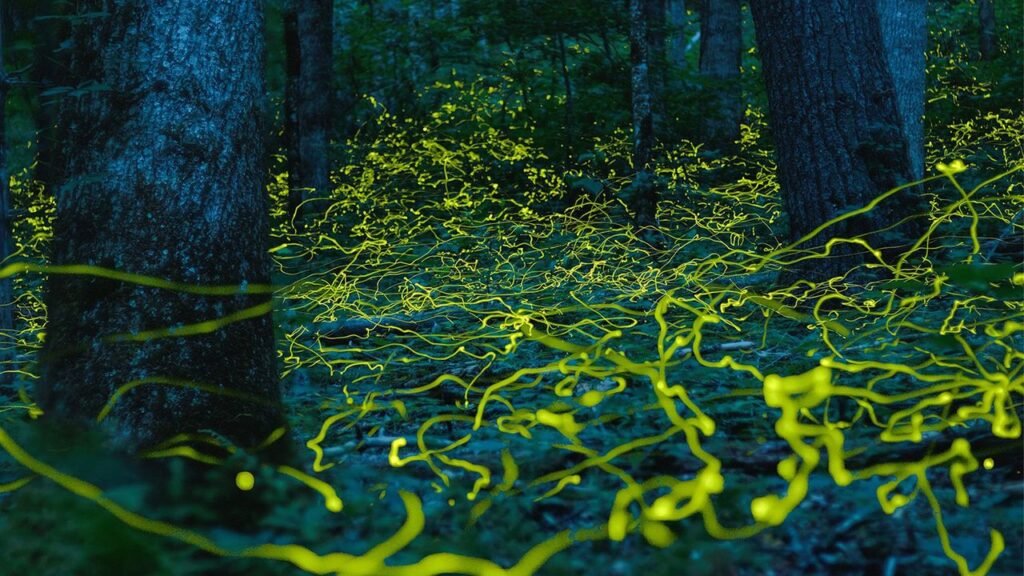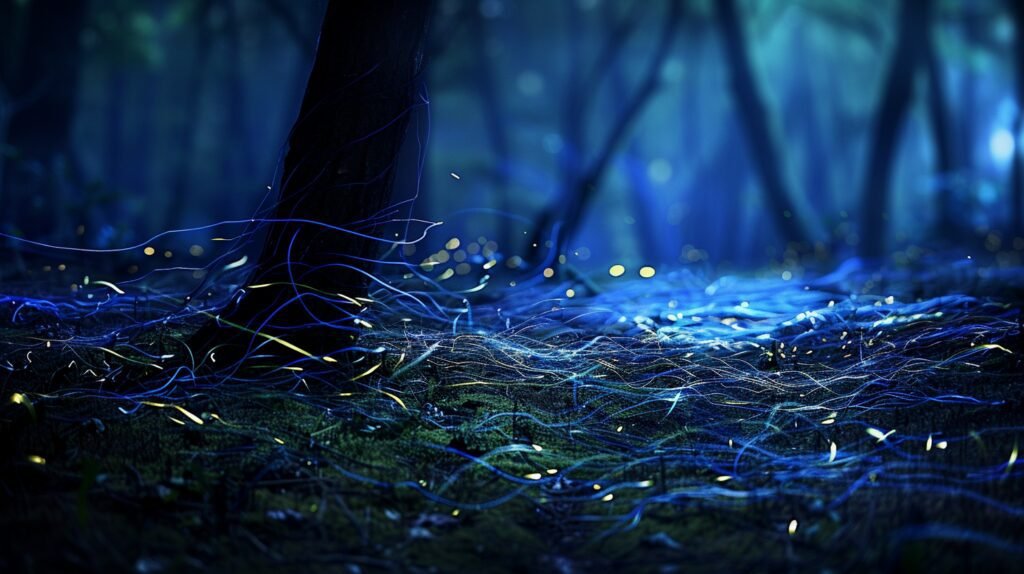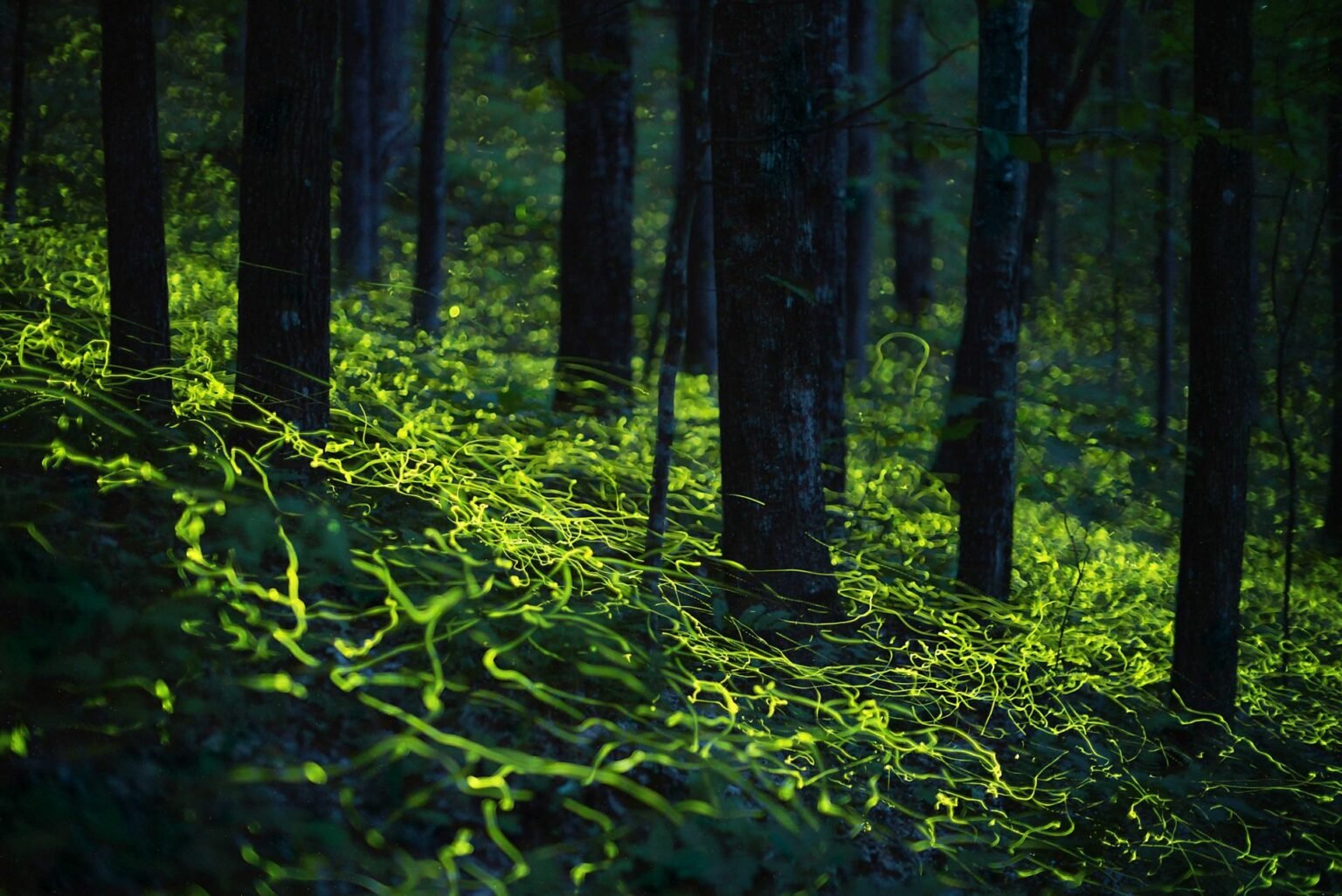Can Rare Blue Ghost Fireflies in Asheville Help Rebuild the Community?

In the heart of the Southern Appalachian Mountains, a quiet natural wonder is beginning to glow once again—this time with renewed significance. The blue ghost firefly Asheville region is known for is more than a biological curiosity; it may now serve as a symbol of hope, recovery, and revitalization.
The Fragile Glow of Asheville’s Blue Ghost Fireflies After the Storm
Eight months after the devastating effects of Hurricane Helene, Asheville and its neighboring communities in North Carolina are still grappling with the damage. The storm left in its wake destroyed homes, ruined infrastructure, and over $53 billion in estimated losses. Yet nature, resilient as ever, offers a rare spectacle in the form of Phausis reticulata, commonly known as the blue ghost firefly.
These fireflies are native only to the Southern Appalachian region and are famous for their continuous blue luminescence—a glow that silently hovers over forest floors from late May to mid-June. Locals believe that these rare beetles may just bring back the foot traffic and eco-tourism the area desperately needs.
What Makes Asheville’s Blue Ghost Firefly So Special?
There are over 2,400 firefly species worldwide, and at least 10 are native to the North Carolina region. But none are quite like the blue ghost firefly. Unlike the intermittent flashing of common fireflies, these beetles emit a steady blue glow, creating an ethereal ambiance through the thick Appalachian forest.

They live in the leaf litter and depend heavily on intact ecosystems. Their eerie lights draw thousands of tourists annually, particularly to the regions surrounding Asheville, such as the Great Smoky Mountains National Park, Pisgah National Forest, and DuPont State Forest.
Asheville Tourism and the Impact on Blue Ghost Firefly Visitors Post-Disaster
Asheville, often hailed as a vibrant, artsy mountain town, is a major hub for visitors aiming to see firefly displays. Yet this year, bookings and tour sign-ups were significantly delayed compared to previous seasons. Nicolle Will of Asheville Wellness Tours noted that although they eventually sold out, it happened later than usual.
“We were still down 70% when we reopened in November compared to previous years,” she explained. While Asheville has officially reopened, the tourist economy has not fully recovered. The blue ghost firefly Asheville phenomenon may be the natural remedy to reignite interest.
Firefly Viewing Etiquette for Blue Ghost Firefly Asheville Fans
Visitors are advised to practice responsible firefly watching. Bright lights, flash photography, and insect repellent can interfere with the insects’ delicate mating rituals and habitat.

Key Firefly Watching Guidelines:
- Minimize light pollution: Use red-light filters if you must move.
- Stay on paths: Protect their leaf-litter habitat.
- Avoid repellents in the forest: Apply before arrival.
- Never catch fireflies: Observation is the best way to enjoy them.
With their rising popularity, the National Park Service now holds a lottery system for firefly viewing in the Great Smoky Mountains and Congaree National Park to ensure protection.
A Naturalist’s Perspective: Resilience Amid Ruins
Jennifer Frick-Ruppert, a naturalist and biologist at Brevard College, emphasized that despite human destruction, the fireflies appear to have survived the storm fairly well. “Floods, fires, tree falls—these are natural events,” she noted. “It’s when the forest gets removed entirely that the fireflies vanish.”
This observation provides hope that as long as the environment remains intact, these rare fireflies will continue to thrive and possibly help Asheville heal.
More Than Just a Light Show: Economic and Emotional Recovery
Fireflies have long enchanted both locals and tourists, but in the post-Hurricane Helene landscape, their emergence carries more weight. Firefly tourism contributes significantly to local businesses—from nature tours and accommodations to restaurants and wellness retreats.
Numerous small businesses depend on the seasonal boost, and some are pivoting to more sustainable eco-tourism offerings to align with conservation efforts. The blue ghost firefly Asheville story is fast becoming a case study in how nature-based tourism can support both economic recovery and environmental preservation.
Preserving the Blue Ghost for Future Generations
As climate change, habitat destruction, and natural disasters threaten biodiversity worldwide, protecting rare species like the blue ghost firefly becomes critical. Environmental groups, park rangers, and local guides are urging both visitors and residents to engage in responsible tourism.
Educational initiatives now accompany many tours to help tourists understand the life cycle, habitat needs, and ecological role of these beetles. The more people learn, the more likely they are to protect.
Hope Glows in the Appalachian Forests
The soft, steady glow of the blue ghost firefly isn’t just a natural marvel—it’s a beacon of resilience. As Asheville continues to recover from Hurricane Helene, this rare beetle could very well become the symbol of a broader renewal—one that intertwines ecology, community, and the quiet magic of nature.
The blue ghost firefly Asheville residents cherish is proof that sometimes, healing starts with a little light in the darkness.




